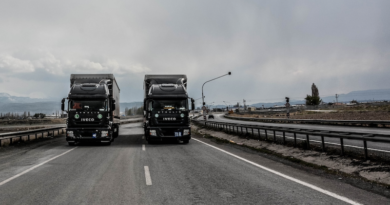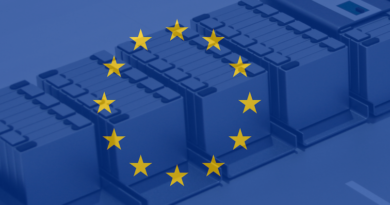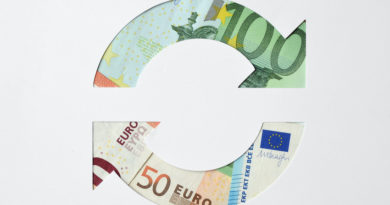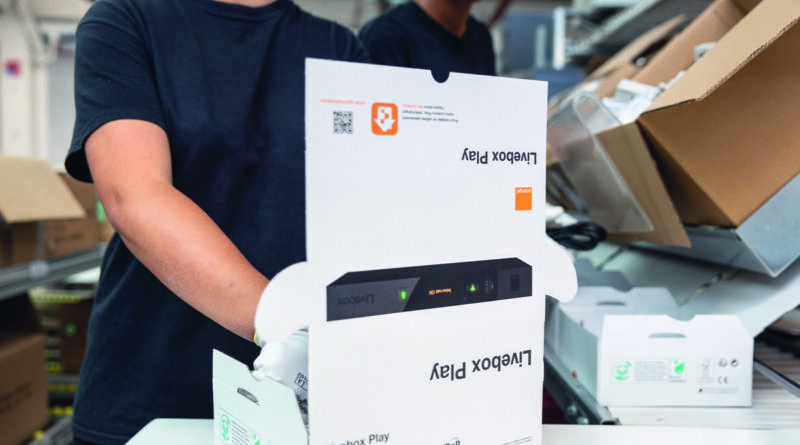
Circular Economy in the ICT sector: Call for a more comprehensive European approach
In December 2019, the European Commission presented an ambitious plan to decrease the EU’s greenhouse gas emissions for 2030 by at least 50% and to reach climate neutrality by 2050: the Green Deal. Since then, many initiatives have already been adopted by EU co legislators including the Directive on Common Chargers or more recently the Carbon Border Adjustment Mechanism. Several others are still under debate including the Energy Efficiency Directive or the Ecodesign for Sustainable Products Regulation.
The digital sector is a key contributor to the Green Transition. First, it must reduce its own emissions, which represent between 3% and 4% of overall global emissions according to studies1, representing a huge challenge to the industry.
Orange is committed to becoming Net Zero Carbon by 2040 with an initial target of 30% less CO2 emissions in 2025 compared to 20152.
To achieve this, we notably aim to source 50% of our electricity needs from renewable energy sources by 2025 and to reduce emissions generated by our buildings and networks. This also includes rolling out the new and more efficient FTTH and 5G networks, while decommissioning copper and 2G/3G mobile networks.
Second, digitalisation constitutes an essential asset to reduce emissions of other sectors. This is why the work undertaken at an international level, with the ITU-T, and at an EU level, with the European Green Deal Coalition, is essential in setting up robust, transparent and agreed methodologies to quantify such effects.
While various initiatives supporting and speeding up the Green Transition are already on the table in the EU, it is fair to say that at least one important issue is still not addressed and deserve more scrutiny. I refer here to the circular economy principles that currently have too narrow a scope insofar as they do not cover ICT network equipment. If correctly addressed, this issue could constitute a step change for the EU and create an attractive precedent for the Rest of the World.
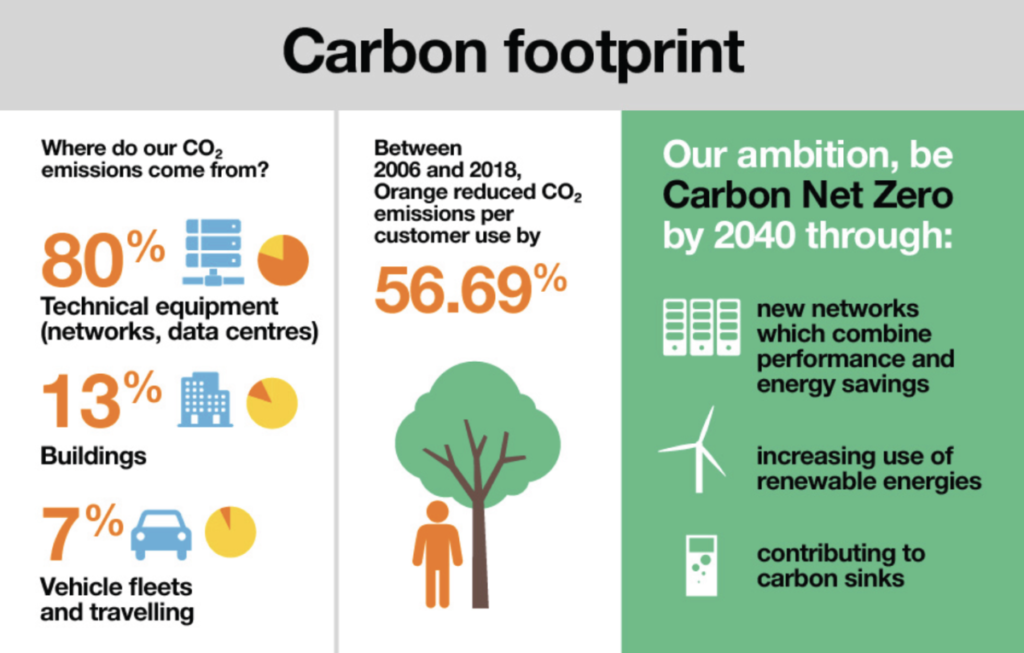
The EU Circular Economy Action Plan: an essential but incomplete approach
Back in March 2020, the European Commission, through its new Circular Economy Action Plan, demonstrated its willingness to introduce a sustainable product policy framework in Europe and rightly identified ‘electronics and ICT’ as a key product value chain. This did not come as a surprise given that less than 40%3 of electronic waste is recycled today in the EU and that 57.6 million tons of electronic waste was generated in the world in 20214.
Nevertheless, in our view there is a key element missing from the EU’s circular economy strategy: it does not tackle, for the moment, the category of ICT network equipment that underpins the digitalisation of our economy and society.
By enabling the extension of the life cycle of network equipment through better eco design and the increased re-use of products across the value chain via efficient and secured refurbishing and resale processes, the EU can expect a win-win formula delivering a
- Significant reduction of the supply chain’s greenhouse gas emissions;
- Reduction of electronic waste, through the promotion of refurbishment (life cycle extension) and improved recycling;
- Better management of raw materials;
- and great potential for job creation in the EU.
Same issues, same rationale
The EU should apply the same rationale to ICT network equipment as it has started to apply to consumer electronics (smartphones, tablets, laptops, etc). This category of equipment purchased by telecom operators bears the same characteristics: new devices promoted instead of improving equipment maintenance; lack of certainty regarding the supply of spare parts in the long term in a given market, and sensitivity to international supply-chain issues. In addition, the re-use in another country of second-hand equipment in perfect working order is hampered by licensing schemes applying mostly at a national level.
In total, it is estimated that at least 800 kilotons of network equipment are sold each year5, hence the need to encourage its reuse, remanufacturing and repurposing.
The need to involve the whole value chain
Orange has innovated to develop the re-use of IT and network equipment, aiming to incite the industry and other telecom operators to consider the benefits of applying the circular economy principles themselves.
Through its “OSCAR” (Orange Sustainable and Circular Ambition for Recertification) Programme, Orange has introduced a new culture within the Group, maximising the use of circular economy principles for the management of its IT and network equipment.
Orange’s partners are encouraged to include refurbished equipment in their commercial proposals and a dedicated marketplace within the company collects the different opportunities for purchasing and reselling available equipment across Orange affiliates or to other operators and partners.
In concrete terms, the OSCAR programme means:
- The setting up of an internal marketplace that enables buyers and technicians from our 26 subsidiaries to exchange and buy used equipment. Over 246,000 items of network & B2C equipment have passed through this platform over the past year;
- Substantial carbon savings: by re-using an existing product, Orange is avoiding the consumption of carbon generated by the manufacture of a new product;
- Substantial financial savings: by using equipment from other subsidiaries that is still in good working order or that has been reconditioned, significant savings can be made compared to buying new equipment. For the first year of its implementation, OSCAR led to several million euros in savings;
- Additional revenues: linked to the re sale of used equipment to companies outside the Group.
But to be successful, such a strategy and paradigm shift in the ICT network equipment value chain must be embraced by all stakeholders. This is where the GSMA comes into play: in March 2022, the association published a Strategy Paper for Circular Economy6 that proposed three objectives to set the stage for a fully functioning circular market for this category of products:
Encouraging the reuse of network and IT equipment within subsidiaries of the same operator and between competing operators;
Promoting the eco-design of network equipment to allow it to be used for longer;
Improving the reparability of equipment and the supply of spare parts
This paper helps create public awareness of the benefits and challenges of using circular economy principles to extend the lifecycles of IT and network equipment. I hope it will help convince the whole IT and network equipment value chain to do things differently.
A key step forward will be to align the different environmental metrics currently used by equipment manufacturers to enable fair benchmarking on global CO2 equivalent impacts, as well as the levels of repairability and e-waste.
The work of the International Telecom Union (ITU-T) and the wider-use of existing standards could serve as a starting point.
We are already working with some vendors to develop the circular economy in this sector. For example, Orange and Nokia have signed an agreement to increase the use of refurbished equipment in telecoms infrastructure, with a focus on radio access network7.
Given that more than 80% of telecom operators’ emissions come from scope 3, it is important for us to develop a common understanding and to strengthen our cooperation and commitment with our partners in the value chain. In this regard, the future « digital product passport » proposed by the European Commission in the Ecodesign for Sustainable Product Regulation is promising. If applicable to network equipment, this regulation would enable us to get a more accurate understanding of the circular potential of the assets we acquire.
Towards an EU framework to support circular business models in the field of ICT equipment?
We are well aware of the challenges ahead of us, notably the lack of refurbishing capabilities and the fragmentation of the second-hand market for ICT equipment across the EU. But these hurdles can be easily overcome if all players work together to drive this paradigm shift.
If the EU wants a fully-fledged strategy capable of putting the circular economy at the heart of the digital sector, it should integrate the IT and network equipment used by telecom operators into its rationale. It will be equally important to work on commonly agreed KPIs and metrics that will apply throughout our value chain.
To conclude, adopting a comprehensive approach on the circular economy is of paramount importance to support the green transition of network operators and vendors. Orange is calling EU policy makers and all relevant stakeholders to sit down together and assess how to move forward and quickly deliver on this crucial goal.
-2 30% fewer CO2 emissions in 2025 compared to 2015 for scopes 1 and 2, and -14% for scope 3 compared to 2018
-3 Eurostat figures, mentioned in the new Circular Economy Action Plan: https://ec.europa.eu/eurostat/tgm/table.do?tab=table&init=1&language=en&pcode=t2020_rt130&plugin=1
-4 According to the European consortium EECONE


